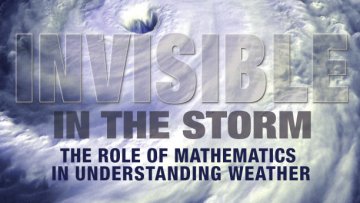17:00
Dynamics of Particles in Liquid Crystals
Abstract
Dynamics of small particles in fluids have fascinated scientists for centuries. Phenomena such as Brownian motion, sedimentation, and electrophoresis continue to inspire cutting-edge research and innovations. The fluid in which the particles move is typically isotropic, such as water or a polymer solution. Recently, we started to explore what would happen if particles are placed in an anisotropic fluid: a liquid crystal. The study reveals that the liquid crystal changes dramatically both the statics and dynamics, leading to levitation of the particles, their anomalous Brownian motion and new mechanisms of electrokinetics. The new phenomena are rooted in anisotropy of the liquid crystal properties, such as different electric conductivity in the directions parallel and perpendicular to the average molecular orientation.
The holographic supersymmetric Renyi entropy in five dimensions
Abstract
I will describe the computation of the supersymmetric Renyi entropy across an entangling 3-sphere for five-dimensional superconformal field theories. For a class of USp(2N) gauge theories I’ll also construct a holographic dual 1/2 BPS black hole solution of Euclidean Romans F(4) supergravity. The large N limit of the gauge theory results will be shown to agree perfectly with the supergravity computations.
Towards the compatibility of Geometric Langlands with the extended Whittaker model
Abstract
Let G be a connected reductive group and X a smooth complete curve, both defined over an algebraically closed field of characteristic zero. Let BunG denote the stack of G-bundles on X. In analogy with the classical theory of Whittaker coefficients for automorphic functions, we construct a “Fourier transform” functor, called coeffG, from the DG category of D-modules on BunG to a certain DG category Wh(G,ext), called the extended Whittaker category. Combined with work in progress by other mathematicians and the speaker, this construction allows to formulate the compatibility of the Langlands duality functor LG:IndCohN(LocSysˇG)→D(BunG) with the Whittaker model. For G=GLn and G=PGLn, we prove that coeffG is fully faithful. This result guarantees that, for those groups, LG is unique (if it exists) and necessarily fully faithful.
High-loop perturbative QFT from integrability
Abstract
The planar N=4 SYM is believed to be integrable. Following this thoroughly justified belief, its exact spectrum had been encoded recently into a quantum spectral curve (QSC). We can explicitly solve the QSC in various regimes; in particular, one can perform a highly-efficient weak coupling expansion.
I will explain how QSC looks like for the harmonic oscillator and then, using this analogy, introduce the QSC equations for the SYM spectrum. We will use these equations to compute a particular 6-loop conformal dimension in real time and then discuss explicit results (found up to 10-loop orders) as well as some general statements about the answer at any loop-order.
Local moduli for the Strominger system and holomorphic Courant algebroids
Abstract
I will give an overview of ongoing joint work with R. Rubio and C. Tipler, in which we study the moduli problem for the Strominger system of equations. Building on the work of De la Ossa and Svanes and, independently, of Anderson, Gray and Sharpe, we construct an elliptic complex whose first cohomology group is the space of infinitesimal deformations of a solution of the strominger system. I will also discuss an intriguing link between this moduli problem and a moduli problem for holomorphic Courant algebroids over Calabi-Yau threefolds. Finally, we will see how the problem for the Strominger system embeds naturally in generalized geometry, and discuss some perspectives of this approach.
Surface Defects and Dualities in Supersymmetric Gauge Theories
Abstract
Global string models with chiral matter and moduli stabilisation
Abstract
I will discuss the implementation of explicit stabilisation of all closed string moduli in fluxed type IIB Calabi-Yau compactifications with chiral matter. Using toric geometry we construct Calabi-Yau manifolds with del Pezzo singularities. D-branes located at such singularities can support the Standard Model gauge group and matter content. We consider Calabi-Yau manifolds with a discrete symmetry that reduces the effective number of complex structure moduli, which allows us to calculate the corresponding periods and find explicit flux vacua. We compute the values of the flux superpotential and the string coupling at these vacua. Starting from these explicit complex structure solutions, we obtain AdS and dS minima where the Kaehler moduli are stabilised by a mixture of D-terms, non-perturbative and perturbative alpha'-corrections as in the LARGE Volume Scenario.
Calabi-Yau Fourfolds, F-theory and Fluxes
Abstract
I will discuss several recent developments regarding the construction of fluxes for F-theory on Calabi-Yau fourfolds. Of particular importance to the effective physics is the structure of the middle (co)homology groups, on which new results are presented. Fluxes dynamically drive the fourfold to Noether-Lefschetz loci in moduli space. While the structure of such loci is generally unknown for Calabi-Yau fourfolds, this problem can be answered in terms of arithmetic for K3 x K3 and a classification is possible.
Oxford Mathematics Professor Mason Porter and former postdoctoral student Sang Hoon Lee, now of Sungkyunkwan University in Korea, have found a new way of analysing population mix. In the past patterns in human movement have been studied using traffic data, mobile phone records, and even dollar bill circulation.



